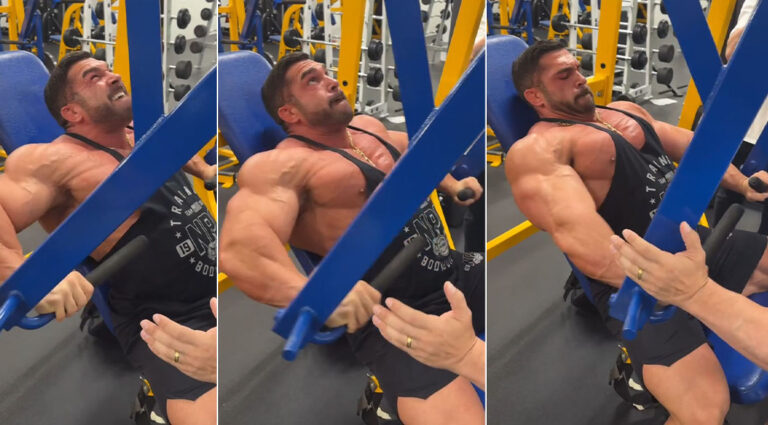
by Matt Weik, BS, CSCS, CPT, CSN
I can’t tell you how many times I’ve been asked at what age kids can start training with their parents or at a gym. And it’s a valid concern because there is so much misinformation out there on the internet scaring parents into thinking weight training is going to turn their child into the 8th dwarf hanging out with Snow White.
Introducing your children to strength training can be a rewarding experience that brings about both physical health and family bonding.
As a certified strength and conditioning specialist with extensive experience working with kids of all ages, I’ve found that the key lies in understanding when and how to start.
In this article, we are going to dive deeper into the topic of at what age can your kids start training with you (safely). We’re going to look at what some of the experts say, and I’ll toss in some of my own experiences as well.
Disclaimer: This article is for informational purposes only and is not meant to treat or diagnose any condition. You should speak with your doctor before starting any exercise program, changing your daily nutrition, or adding any supplements to your regimen.
When Is the Right Time for Your Kids to Start Training?
Research indicates that children can begin strength training around the ages of 7 or 8, provided they have the maturity to follow instructions and maintain proper form.
According to Children’s Health, young athletes can start a strength training program as early as 7 or 8 years old if they express interest and can adhere to guidelines.
Similarly, the Mayo Clinic suggests that with proper instruction and supervision, kids interested in strength training may start around this age.
I would tend to agree with what Children’s Health and Mayo Clinic are saying. That said, if you’re into health and fitness and understand how to train properly, you can even bump things up to even 5 or 6 years old.
Personally, all of my boys started training with me when they were around the age of 5.
Now, they aren’t doing full workouts at that stage, but rather learning how to do bodyweight squats, lifting Styrofoam dumbbells that look like actual weights, and learning the fundamentals of how to breathe and correct form by me teaching them as well as them watching me as an example during my own training sessions.
The Importance of Proper Guidance When Your Kids Start Training with You
It’s crucial to differentiate between strength training and weightlifting, bodybuilding, or powerlifting. The latter disciplines are not recommended for children whose bodies are still developing.
Instead, focus on exercises that use body weight for resistance, such as push-ups, squats, and lunges. Introducing resistance bands and light free weights can be appropriate as they progress, always emphasizing correct technique and safety.
My kids would start with light dumbbells around the age of 6. Surprisingly, they got stronger insanely quickly. In fact, they were easily using the 5 and 8-pound dumbbells for exercises like bicep curls, shoulder presses, squats, and chest presses. Again, supervision is important, as well as ensuring they’re using proper form.
My Experience Training with My Kids
As someone deeply invested in fitness and family, I’ve integrated training sessions with my own children. These sessions are not just about building strength but also about teaching discipline, setting goals, and enjoying physical activity together.
By keeping the workouts fun and engaging, my kids remain enthusiastic and look forward to our training times.
They often ask me if I’m “working out today.” When I say yes, they get all excited and ask if they can work out, too. At the end of every session, my oldest goes up to make himself a protein shake while my twins ask to have a pull-up challenge.
My twins compete against each other to see who can do the most pull-ups that day. Surprisingly enough, 3-5 is the average for each of them, while one of them must have eaten his Wheaties the one morning as he got 8.
It’s all about making your session fun and getting them to understand that exercise isn’t a “chore” or something to do begrudgingly.
Benefits of Early Strength Training
Engaging children in strength training offers numerous advantages, such as:
- Improved Muscle Strength and Endurance: Helps in daily activities and enhances athletic performance.
- Better Bone Density: Weight-bearing exercises promote healthy bone development.
- Healthy Body Composition: Assists in maintaining a healthy weight and reducing the risk of obesity.
- Boosted Confidence and Self-Esteem: Achieving new milestones can enhance a child’s self-worth.
Safety First
Ensuring safety is paramount. Always supervise your child’s training sessions, and consider consulting with a fitness professional experienced in youth training.
This approach ensures that exercises are age-appropriate and performed correctly, minimizing the risk of injury.
Making Training Enjoyable
The primary goal is to make strength training a positive experience. Incorporate games, challenges, and varied activities to keep your child engaged. Celebrate their progress, no matter how small, to build motivation and a lifelong appreciation for fitness.
We celebrate the winner of the pull-up challenge in our home. And when one of the boys does more pull-ups than he did before, we clap and make it a big deal. Overall, I just want it to be fun for them.
But to close this out, with the right approach and guidance, children can safely begin strength training at a young age. By training together, you’re not only promoting physical health but also creating lasting memories and instilling valuable life lessons. If you aren’t sure where to start, talk to a professional in your area and get some extra guidance.










